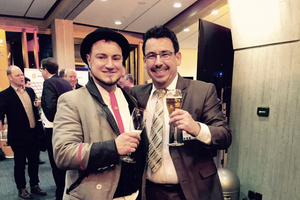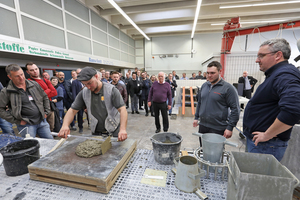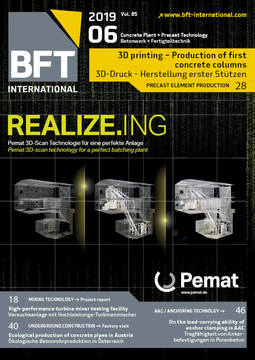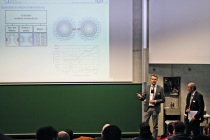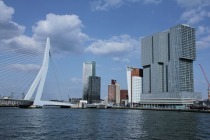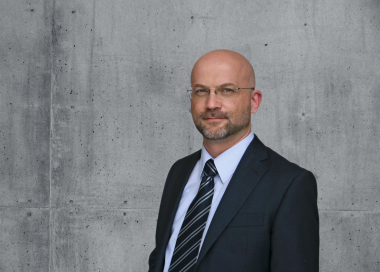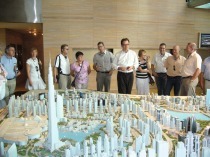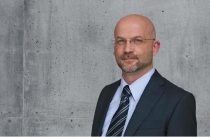Four years of journeyman’s travels around the world
As early as in the Late Middle Ages, itinerant tradesmen, or journeymen, were often roaming the roads across Europe. Yet this age-old tradition continues to the present day, even on a worldwide scale. According to Wikipedia, the German concept of “Wanderjahre” – years of travel (also variously referred to in German as “Wanderschaft”, “Walz”, “Tippelei”, or “Gesellenwanderung”) – refers to the time of journeymen’s travels after having completed their apprenticeships and received their certificates. Their aim was to get familiar with new working practices as well as new places, regions and countries, and to gather hands-on experience. During this period, traveling journeymen must not get closer than 50 km to their previous place of residence.
Besides a large number of carpenters, skilled workers of other trades also embark on this journey, including concrete workers. BFT International interviewed one of them – read the account of his very own experience below.
BFT International: Dear Ralf, I must admit that I envy you, at least a bit. When I completed my own apprenticeship as a bricklayer and concrete worker at the beginning of the 1980s in Dresden, the prevailing political environment in the former East Germany, which included travel bans to a large number of countries, made traveling as a journeyman overseas, as you did, completely unthinkable for me. What exactly were your reasons for setting out on such a journey?
Ralf Keßler: New places and foreign countries have always fascinated me. This is why I wanted to get out of my home region and break new ground. I thus applied for vocational training as a skilled concrete and reinforced concrete worker in Berlin, which I successfully completed in August 2012. Even though I very much liked my company and the exciting prospects of continuing my work there, I wanted to move on to learn even more about my trade and of the world at large. This is why I began to travel in the same year, shortly after completing my apprenticeship. I joined the “Fremder Freiheitsschacht” association of journeymen and soon started wearing the emblematic red tie and the grey/black attire symbolizing the combination of wood and stone ultimately giving rise to concrete.
BFT International: Which means that you initially stayed at a number of places relatively close to your home and started traveling across the globe later on?
Ralf Keßler: Yes, that’s exactly how I’d put it. I began my journey in December 2012 and found my very first job at a farm in the German Allgäu region. The farmer wanted to extend his cowshed, so I learned a lot about the complex system of drainage channels, small dams and settling basins installed underneath the shed. My task was to cast all these elements in concrete. I had a great time there, pouring concrete in the morning and milking the cows in the evening, until spring finally arrived so that I could go elsewhere.
I continued on my journey walking and hitchhiking through Southern and Eastern Germany. In Leipzig, I marveled at the monuments made of concrete, which certainly would make for an interesting conservation and restoration project, and gathered some first-hand experience in a small concrete furniture business.
In the second year of my journey, I mainly traveled Germany and its neighboring countries, working for bricklayers and carpenters, and tried to grasp the “big picture”.
In Hamburg, I worked directly at the port in the Hafencity project, watching huge vessels passing by while installing formwork and pouring concrete on the big construction site. My gang was really up to the task, and I earned a fair amount of money, which I then spent on traveling to the United States and across the entire continent from the east to the west, and from San Diego all the way up to Canada.
BFT International: That sounds really exciting, but can you tell us a bit more about your experience during this trip? What did you like the most?
Ralf Keßler: I found a job at a carpenter’s shop in Texas, which I liked so much that I almost decided to stay. I was truly impressed with the Americans’ can-do attitude and their courage to constantly try something new. There’s hardly any successful businessman in the States who had not previously failed and then tried again. It’s all about lifelong learning and the ambition to also try something different. This attitude deeply resonated with my own mindset.
I also liked the polished concrete floors very much and thought this to be a good solution for Germany, too.
BFT International: Presumably you returned to your home country in-between for this very reason?
Ralf Keßler: More precisely, I stayed in Germany just for a short interim period to look for new work in Switzerland, and I was very lucky to find a huge construction site quite soon: a tower barely projecting from the ground was to ultimately rise to a height of almost 250 meters – that’s what I call an exciting job. I asked the foreman for work and was lucky again. This ThyssenKrupp test tower was clearly my most interesting project, a true landmark structure, and I worked together with a fellow journeyman from my association, too, at its very top.
My tasks also included monitoring and checking the quality of the concrete delivered to the site, producing test cubes, documenting key characteristics and parameters, and conducting various series of tests. This was great fun indeed.
BFT International: But you got attracted to the big wide world once again?
Ralf Keßler: Well, my journeyman’s travel period was nearing its end slowly but constantly, and I wanted to set out on another long-distance trip before it would all come to a close.
I traveled to Southeast Asia, including Thailand, Laos and Vietnam, and then on to Australia, where my fellow journeymen and I found new work. We stayed for several weeks in the outback, no people for miles and miles on end, the next town 300 kilometers away, as well as in the North Australian rainforest and at the coast, living with dropouts, hippies and surfers.
At that time, I hadn’t seen my home for over four years, wine growers got ready for the grape harvest in Germany, and I dreamed of Federweisser (new wine) and onion pie, of the gentle hills of my homeland, and of finally seeing my family again. I said good-bye to my fellow journeymen at the most beautiful time of the year while they accompanied me right up to the sign of my home town.
I finally arrived back home at the end of 2017, but this is not yet the end of my journey because I still want to tick some more things off my list that I didn’t manage to achieve during my four years on the road. Journeyman’s travels are but one milestone, the rest still lies ahead of me ...
BFT International: To wrap it all up, there’s one final question to ask: What have you been dealing with after returning home?
Ralf Keßler: In the second half of 2018, I worked as a mixer foreman and precast concrete worker at Villa Rocca in Viernheim. Prior to that, I worked at Element Fertigteile Speeter in Landau, taking care of formwork installation and concrete pouring.
At the beginning of 2019, I thought long and hard of getting enrolled in another training program, and I decided in favor, so I am currently attending a course at Ferdinand von Steinbeis School in Ulm to become a master craftsman in the concrete block industry, specializing in concrete block and terrazzo manufacturing.
BFT International: Dear Ralf, we wish you many more positive experiences in your career as a concrete worker and thank you for your interesting insights.
Interview: Dipl.-Ing. (FH) Silvio Schade, Editor-in-chief BFT International

